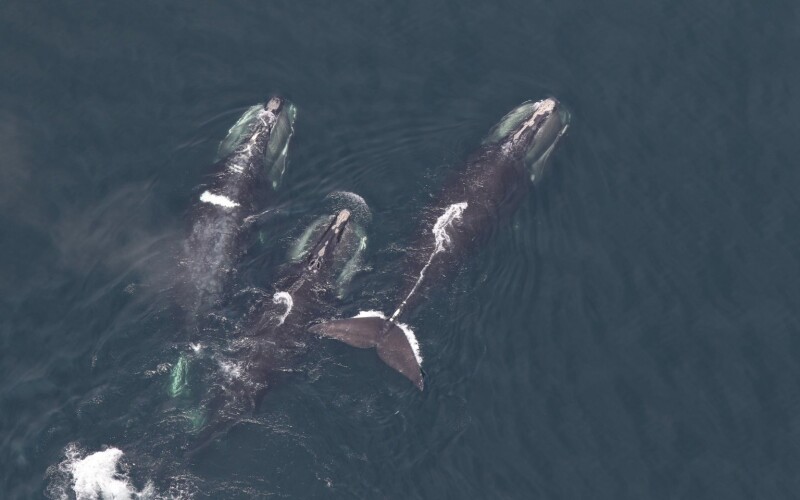The National Oceanic and Atmospheric Administration is stepping up enforcement of vessel speed limits when endangered North Atlantic right whales are on the move. The agency has used satellite technology and even highway patrol-style speed radar to nab violators.
In 2021-2022 NOAA’s Office of Law Enforcement reported bringing 19 complaints against vessel operators for exceeding a 10-knot speed limit that the agency declares in “seasonal management areas” from November to July as the right whales move off the U.S. East Coast. The agency levied $218,500 in penalties on those operators.
OLE brought 53 cases in 2022-2023, with total potential penalties of $882,806
Meanwhile, the agency says Northeast fishermen’s compliance with lobster and crab gear rules to protect whales is on the upswing, with 87 percent of inspected vessels now found to be using all the required gear modifications.
Since the rules took effect in May 2022, NOAA, state and Coast Guard officers have conducted more than 250 lobster and crab pot/trap fixed gear-focused patrols, the agency says.
“During those patrols, agents and officers have inspected more than 1,800 individual vessels for compliance with the new gear modification and marking requirements,” according to OLE. “About 73 percent of vessels were compliant when the new regulations went into effect. As of June 2023, the compliance rate climbed to about 87 percent."
Big ships are known to accidentally kill whales, especially around busy shipping lanes close to East Coast ports. Since 2016 NOAA has been monitoring what it calls an “unusual mortality event” of humpback whale strandings on the Atlantic coast beaches. Necropsies on dead whales have shown evidence of ship strikes.
Opponents of offshore wind power projects contend that survey work on turbine sites could be a factor, a claim dismissed by officials at NOAA and the Bureau of Offshore Energy Management who say ship strikes and fishing gear entanglements are leading causes of whale mortality.
The danger is more critical for North Atlantic right whales, with a population now under 350 animals and only 70 adult females capable of bearing young. Any right whale deaths worsen the odds for species survival, whale scientists say.
Every year from November to July, NOAA announces a number “seasonal management areas” in affect off the East Coast when right whales are detected on the move. When SMAs are declared, most vessels 65 feet or longer are required to reduce speed to 10 knots or less while transiting those areas.

“Since 2008, these areas have reduced the threat of vessel strikes to right whales in their feeding and calving grounds and on their migratory routes,” according to NOAA.
But studies by NOAA and conservation groups have used Automatic Identification System (AIS) data to analyze compliance with the 10-knot rule – and have found the shipping industry frequently fails to comply.
NOAA’s Office of Law Enforcement enforces the speed limits, and recently published an update on that effort that includes:
• Industry and public outreach to help prevent violations before they happen • Automatic Identification Systems (AIS) to detect speeding.
• Portable radar units to detect speeding by vessels not carrying AIS.
• Active patrolling of Seasonal Management Areas.
OLE began sending warning letters to violators in 2018 and since then has “sent approximately 1,000 letters to vessel owners across multiple industries. That includes 179 sent out between April and June of 2023,” according to the agency.
Meanwhile since November 2021 agency officers used satellite-based tracking in “near-real time” to send more than 250 alerts to vessels operating in waters near right whales.
“We alert vessels of confirmed right whale presence nearby for up to 48 hours following a confirmed sighting to remind them to go slow, keep a minimum distance of 500 yards, and if sighted to please report the sighting at 866-755-6622 or the WhaleAlert App,” according to the agency.
NOAA has proposed extending the 10-knot rule to vessels under 65 feet in length when management areas are declared – inspired by incidents when whales have been struck by smaller sport and charter fishing boats. That proposal has brought furious opposition from across the U.S. marine industry sector, from boat manufacturers to charter fishing operators and island ferry companies.





